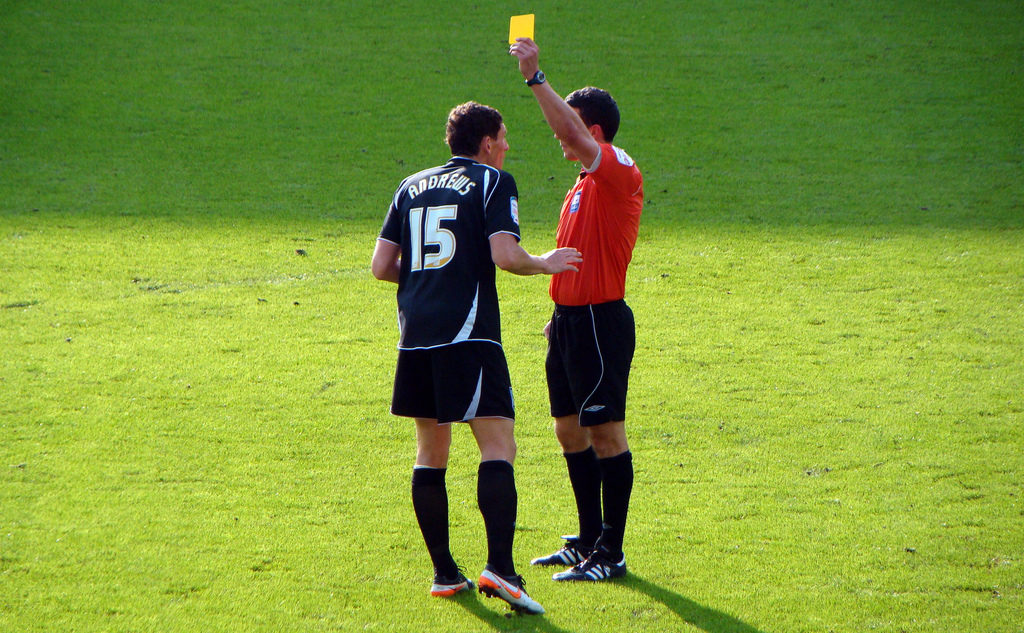Betting On Yellow/Red Cards And The Influence of Referees. Part II
Betting on yellow/red cards is fun.
In the first part of the column “SmartBettingGuide” made sure you get to know betting on football cards and pointed out the importance of referees.
This article you can read here.
Now we take one more step forward and get in details how we can make sure we use it to our advantage.
In-Play Betting
Okay, you have collected a lot of data before the game but it guarantees nothing. The game can go in a different direction that you have never imagined. Do not get sad because this gives you an excellent opportunity to bet live (in-play). Even bigger advantage you have if you are at the stadium and see every detail in your own eyes (usually broadcasts and betting websites have a small delay).
Even though technologies develop rapidly and this delay becomes smaller and you may be in front of your TV instead of stadium, you still may take the most out of it.
The principle here is simple – if you know the sport well (and if you watch many games, you probably do know), you may notice how the atmosphere changes on the court. These are the situations when you may soon see a yellow or even a red card. Take into consideration the possibilities if defensively active player already has yellow card and lost his temper.
Try to see the mood of the players, how physically they fight. If you ever notice that player X has grudge against player Y, take it as a sign that you might see some cards shown.
Another situation when the number of cards shown increases is the ending of the match. This is very valid when we are speaking about two-leg games. Quite often team that had a successful 1st leg will try to keep its advantage and put a bus on goal. Things like these are very usual for UEFA Champions League and UEFA Europa League qualification games. After successful start, teams look to play defense, use more physicality and this results in more fouls, some yellow cards and even red cards, sometimes.
When speaking about in-play betting on yellow/red cards, 3Ts principle is very popular. Temperament, tempo, tactics.
Usually many fouls are committed against teams that like to make lots of short passes (closely related to tempo). This style of play irritates opposing team. As well this kind of play also creates good offensive opportunities, forcing defense to do its work by fouling. And those fouls quite often end up becoming cards. Absolutely opposite is when teams tend to play long ball.
If you watch many games, you can really notice some situations when you are aware and pretty sure that soon there will be a goal or even a red card. Since bookmakers very often place their trust in statistics, we have an advantage here and thanks to our experience we can foresee possible endings of some situations and place bet. Of course, we cannot guess always right, therefore it is very important to evaluate odds and decide whether it is worth risk or not.
Finally, you should pay attention to as basic things as team’s aims and tactics. May it be for one team the match is crucial while another would not get sad after losing. It is important to take into an account current standings and even the approach to the game (which you will notice during the match).
Coming back to the referee topic, put your attention to their actions after certain episodes. Do they book physical play? Are players confident in referee’s authority? Things like these are hard to know after analyzing simple statistics and card averages. Besides that, every match is a different story which is being affected by many different details.
This is the reason why while betting on yellow/red cards (and at all) you must be neutral and try to understand the game as much as possible in both tactical and psychological aspects of the game.
***
In another part of the article we are going to present you the statistics of booking. As well we will try to analyze those.






